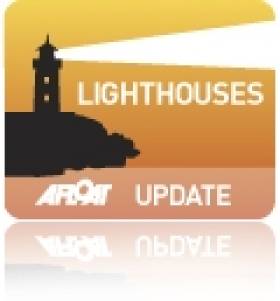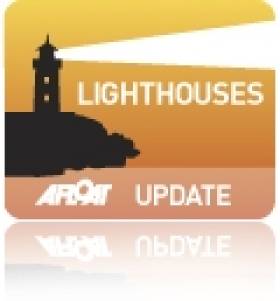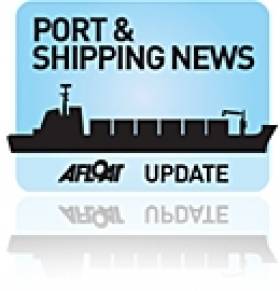Displaying items by tag: Trinity House
Trinity House, the elegant UK working home of the General Lighthouse Authority opposite the historic Tower of London on Tower Hill, has teamed up with caterers and the powerboat charter company, Solent Rib Charter, to offer bookers an exciting senior corporate management team building package incorporating a light breakfast followed by a thrilling 'Thames Rib Blast' on the River. The Ribs can accommodate up to eight guests per boat and while the duration of the ride is flexible, most opt for a two-hour 'Blast' through Central London and/or to the Thames Barrier and back. Participants then return to the House for a first-rate champagne lunch catered by palette. Delegates will be welcome to leave personal items/luggage at the House while on the River.
The 'Blast' package is charged at a (non-negotiable) £1,988 + VAT (i.e. £248.50 per person at full capacity) per boat and includes exclusive venue hire and the two - three hour Thames River 'Blast' (irrespective of final numbers). The breakfast and post-Blast lunch is charged separately starting from an additional £167 + VAT per person for a minimum of eight participants. (Fewer numbers can be catered for a slightly increased charge).
Following a light continental breakfast, participants make the short walk to St. Katherine's Dock passing the moat of the Tower of London where the memorial Poppies were so spectacularly displayed. After donning protective clothing - guests are provided with breathable oilskins for warmth - guests will embark on a Rib for a morning of high-speed thrills (but no spills) zipping past some of the City's most famous river-side buildings such as the Houses of Parliament, London Eye, The Shard, and Old Billingsgate etc. The Ribs operate in even the most choppy and chilly conditions and can be seen on the River all year round. A celebratory lunch comprising seasonal items (such as Basil Panna Cotta to start followed by Gressingham Duck Breast as a main with Elderflower Tart for dessert) with accompanying wines and/or champagnes served by uniformed staff will be waiting the triumphant team on return to the House, rounding off an unforgettable half day on the Thames.
All bookings are subject to availability and general booking terms and conditions of Trinity House, Solent Rib Charters, and Palette.
#lighthouse – In 1514, Henry VIII granted the Corporation of Trinity House a royal charter establishing it as an authority in maritime matters within his kingdom. Later its remit was expanded to include responsibility for the provision and maintenance of aids to navigation. 500 years later the organization is still responsible for the operation of lighthouses around England, Wales and the Channel Islands. Though automated now, these lighthouses are maintained in all their unique and idiosyncratic splendour, proving popular architectural landmarks with locals and visitors alike.
To celebrate Trinity House's quincentenary, this beautiful photographic book features the best photography from the Corporation's own archive, much of which has never been seen by the public before. The fascinating images seek to show some of the unusual diversity of the ancient, complex and somewhat misunderstood institution, with accompanying passages to describe what happened during those five eventful centuries.
This photographic account of these iconic structures dotted around the most vulnerable stretches of coastline is to be treasured by anyone who finds the haunting beam of a lighthouse at sea an immensely comforting sight, as well as walkers and families for whom a lighthouse on the landscape is a completely irresistible draw.
Neil Jones is the Records Manager for Trinity House. Responsible for marshalling the Corporation's history, archives and artefacts, he uses these often unique resources to create exhibitions and publications that highlight this fascinating history and helps others further their interests in lighthouses, navigation, genealogy and British maritime history.
Paul Ridgway's association with Trinity House goes back four decades. During this time he has contributed to, or edited, Trinity House publications including its celebrated journal Flash. For nearly a quarter of a century he edited the Bulletin of the International Association of Marine Aids to Navigation and Lighthouse Services (IALA).
#lighthouses – A London maritime institution with strong Irish connections stretching back over 500 years is opening its doors to the public to celebrate an important maritime birthday next month. In 1514 a young King Henry VIII granted a Royal Charter to a fraternity of mariners called the Guild of the Holy Trinity "so that they might regulate the pilotage of ships in the King's streams" and the month of May marks the 500th anniversary of this milestone event in British maritime history. Included in the celebrations at Trinity House, home to the Corporation and the working office of the General Lighthouse Authority, is a unique Open Day Invitation to the general public to discover the treasures and artefacts preserved and on display within its five elegant rooms and access areas from 10am - 3pm on Saturday, 17th May. There is no need to contact the House - interested day-visitors can arrive and wander about the House at their leisure and receive information from expert guides stationed throughout.
Enthusiasts unable to make this date can schedule a visit from 10am - 3pm on Saturday 20th September (only) as part of the city-wide Open House London promotion created by Open-City (www.open-city.org.uk) and staged on the 20th and 21st of the month providing rare public access to 800 other exceptional buildings in London.
Trinity House is located on Tower Hill overlooking the historic Tower of London and the picturesque Trinity Square Gardens containing a memorial to merchant navy heroes of two World Wars and the Falklands War. It is available for private hire on an exclusive use basis and throughout the year is a popular venue for prestigious corporate and social occasions and is licensed for weddings and civil service ceremonies (please visit www.trinityhouse.co.uk/events for more details).
Built in 1794, the history of the House is omnipresent and throughout the building, valuable paintings and antiques bear out the nation's remarkable nautical heritage. One of its more recent acquisitions is the brass bell from the Royal Yacht Britannia which was decommissioned in 1997.
Trinity House's connection with seamarks and lighthouses dates from Elizabeth I and the Seamarks Act of 1566 which granted powers to set up "so many beacons, marks and signs for the sea whereby the dangers may be avoided and escaped and ships the better come into their ports without peril." The first lighthouse was built during the reign of James I by Trinity House at Lowestoft in 1609, and the next 200 years saw a proliferation of light house building around the coast.
In its 200 year history, the building of Trinity House has welcomed royalty, prime ministers and Lords of the Admiralty and is today managed by Deputy Master, Captain Ian McNaught. Reflecting the on-going patronage of the Crown, the current Master of the Corporation is HRH The Princess Royal, filling a role held in former centuries by, amongst others, the diarist Samuel Pepys, the Duke of Wellington, William Pitt the Younger and, more recently, The Duke of Edinburgh.
About Trinity House
Trinity House is the working office of the General Lighthouse Authority (GLA) for England and Wales with responsibility for nearly 600 Aids to Navigation from traditional aids such as lighthouses, buoys and beacons to the latest satellite navigation technology. In addition, it inspects over 10,000 local Aids to Navigation provided by port and harbour authorities and those positioned on offshore structures. The venue at Tower Hill pays a rent to the Corporation for its use which ensures, as in all other aspects of the two organisations' finances, that the accounts of the Corporation and the General Lighthouse Authority are entirely separate and without crossover.
Incorporated by Royal Charter in 1514, the Corporation is also a major maritime charity, wholly funded by its endowments. The Corporation spends around £4m each year on its charitable activities including welfare of mariners, education and training, and the promotion of safety at sea. It is also a Deep Sea Pilotage Authority.
#Navigation - Marine navigation systems in yachting and shipping are 'primitive' compared to the standard in air travel, according to an electronics expert.
As Yachting Monthly reports, Martin Bransby of the UK's General Lighthouse Authorities said that "demands on marine navigation are only getting tighter, yet electronic systems at sea a primitive compared to those used in air travel. This needs to change."
Bransby made his comments following a trial to tackle the problem of rogue GPS jammers in the North Sea by the lighthouse authorities at Trinity House.
The new PNT (positioning, navigation and timing) method uses new technology to transmit critical data in the even of the loss or failure of GPS, which is vulnerable to interference from a variety of sources, both environmental and deliberate.
"The more dependent we become on electronic systems, the more resilient they must be," said Bransby. "Otherwise, we face a scenario where technology is actually reducing safety rather than enhancing it."
These new trials come after news that the Irish Coast Guard is collaborating on a new system of marine monitoring that will help detect drifting or rogue vessels in international waters before they become a problem for individual states - such as the 'ghost ship' MV Lyubov Orlova which as of last week was still adrift heading eastwards somewhere in the North Atlantic.
Hard-Working Vessels Keep Lights Switched-On
Sailing was not the only activity that took place in Dublin Bay last Saturday as the Northern Lighthouse Board's (NLB) multi-function tender NLV Pharos was busy at work, writes Jehan Ashmore.
The NLB is the Scottish equivalent of the Commissioners of Irish Lights (CIL) and it is not unusual for such vessels to share work duties beyond their respective jurisdictions. The 84m NLV Pharos is equipped with dynamic positioning and a 30-tonne main crane on her 300m2 aft-deck.
Overall she is similar in appearance to Irish lights ILV Granuaile which is based out of Dun Laoghaire. The Irish Lights tender built in Romania in 2000 tends to operate more often off the west coast during the summer months due to the more favourable weather conditions.
The 1,300 (dwt) deadweight tonnes NLV Pharos yesterday returned to her base in Oban from her Irish duties. The west coast base was established in 1904 and is also homeport to the service's smaller NLV Pole Star which is equipped with an 18-tonne crane on her 90m2 aft deck.
The facility in 2000 underwent a £4.2 million redevelopment to turn a buoy yard into a multi functional support base which is computer-linked to the NLB headquarters in Edinburgh.
In addition Trinity House which maintains the service for England and Wales operate the tenders THV Galtea,THV Patricia and the fast-response craft THV Alert from their base in Harwich.
Trinity House forms the trio of the General Lighthouse Authorities (GLA) alongside NLB and CIL. Each member of the GLA co-operate in the allocation of vessel-tender deployment.
Asides the varied and critical role of the tasks performed by the GLA's tenders, they are also available for charter to third parties. Between them the tenders can conduct buoy and chain work, search and rescue, lighthouse re-fuelling, salvage and recovery, towing, hydrographic applications and ROV work.

































































